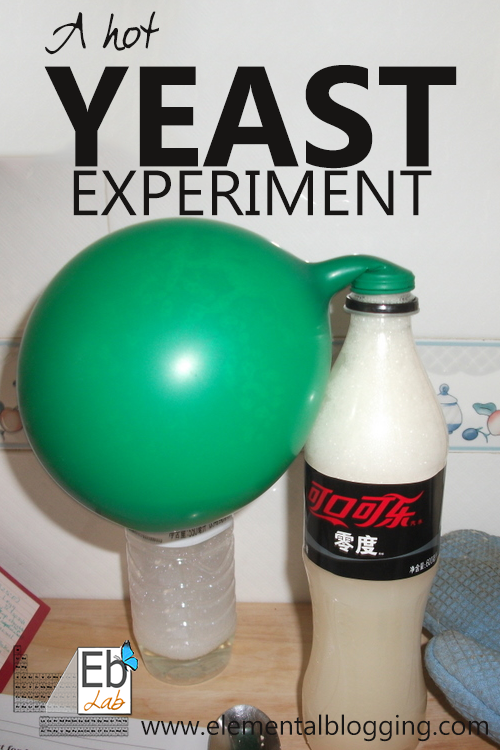 Yeasts and bacteria come in all shapes and sizes. They also have an optimal temperature range at which they can grow and reproduce. Most yeasts and bacteria cannot multiply at very high or very low temperatures, but there are exceptions.
Yeasts and bacteria come in all shapes and sizes. They also have an optimal temperature range at which they can grow and reproduce. Most yeasts and bacteria cannot multiply at very high or very low temperatures, but there are exceptions.
In this weeks Science Corner we are going to test how sensitive yeast is to temperature.
A Hot Yeast Experiment
You will need 3 clear bottles or glasses, 3 balloons, 3 packets of yeast, sugar and water.
Steps to Complete
- Label the bottles: cold, warm and hot.
- Use a funnel to carefully add 1 ½ cups of ice cold water to the “cold” bottle.Use a funnel to carefully add 1 ½ cups of warm water to the “warm” bottle. Have an adult use a funnel to carefully add 1 cup of very hot water (close to boiling) to the “hot” bottle. (Note: Hot water is very dangerous and can cause injury. ALWAYS use proper protection when handling hot water! Be sure to have an adult handle the hot water at all times. )
- Add 1 packet of yeast and one TBSP of sugar to each of the bottles, stir to mix, and then quickly cover the top of each of the bottles with a balloon.
- Wait 10 minutes.
- Make observations and measure the circumference of each balloon.
Results
You should see that the balloons on the cold and hot bottles did not blow up at all. The balloon on the warm bottle should have blown up quite a bit.
Explanation
Yeast is a temperature sensitive organisms. It can survive at low and high temperatures, but it will not grow or reproduce. The optimal temperature for growth of yeast is between 90 F (32 C) to 100 F (38 C), which is why you see that organisms in the warm bottle have been activated to grow and produce carbon dioxide. Yeast is not activated below 50 F (10 C) or above 140 F (60 C), so the cold and the hot bottle do not show any growth.
As a point of clarification, yeasts and bacteria are not in the same class of organisms. Although both are unicellular and they do behave in some of the same ways, yeasts are eukaryotic and bacteria are prokaryotic. Remember that a eukaryotic cell has a nucleus that carries the genetic material, while a prokaryotic cell does not. Yeast belong to the Fungi kingdom, while bacteria have their own kingdom.

Take if Further
There are bacteria that can survive at very high temperatures, like the ones that give the caldera pictured above it’s blue color. These bacteria are called thermophilic bacteria, which means “heat-loving”. Yellowstone National Park in the USA is full of geothermic features that have an amazing array of beautiful colors due to the thermophilic bacteria present. You can have your student research the park and it’s geothermal features to learn more about this type of bacteria.
Coming up in two weeks: Where Nature Study Fits In to Science Education

 Sign up below to receive weekly tips & tools for homeschool science and we'll send you a FREE copy of
Sign up below to receive weekly tips & tools for homeschool science and we'll send you a FREE copy of